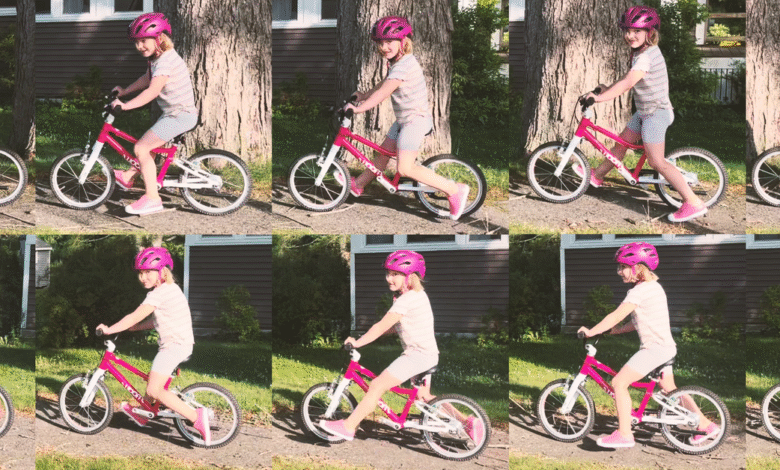Revolutionary Trick Ditches Training Wheels for Quicker Bike Riding Lessons!

Expert Tips for Teaching Kids How to Ride a Bike
Teaching your child to ride a bike can be an exhilarating journey for both of you. This rite of passage represents freedom for kids and a chance for parents to impart valuable life skills. Here’s a thorough guide to make this process enjoyable and effective.
Why Learning to Ride a Bike is Important
Teaching your child to ride a bike serves multiple purposes beyond just getting from point A to point B. **Here are some key benefits:**
– **Physical Fitness:** Riding a bike boosts cardiovascular health while enhancing motor skills.
– **Confidence Building:** Overcoming the challenges of learning encourages resilience and self-assurance.
– **Social Opportunities:** Biking can pave the way for new friendships and bonding experiences.
Essential Skills You’ll Need
Before you start the teaching process, ensure you are equipped with essential techniques. **Here are some critical skills:**
– **Patience:** Understand that each child learns at their own pace.
– **Encouragement:** Positive reinforcement can help boost your child’s confidence.
– **Safety Awareness:** A good understanding of bike safety will keep your child secure during practice.
Choosing the Right Bike
Selecting the right bike is crucial for a successful learning experience. **Consider these factors:**
– **Size:** Ensure the bike is the correct size for your child. They should be able to touch the ground with their feet.
– **Weight:** A lighter bike is easier for children to control.
– **Type:** Balance bikes, traditional bikes, or bikes with training wheels—choose what’s best suited for your child’s learning style.
**Here’s a table of specifications to consider:**
| Feature | Description |
|---|---|
| Frame Material | Aluminum is lightweight and durable, making it ideal for children’s bikes. |
| Wheel Size | 18′-20′ wheels are generally suitable for younger kids; larger wheels accommodate older children. |
| Brakes | Coaster brakes are simpler, while hand brakes offer more control. |
| Weight Limit | Check weight capacity to ensure safety and stability. |
Setting Up for Success
Picking a suitable location to teach your child how to ride is crucial. **Here’s what you need to consider:**
– **Flat and Open Area:** Look for a safe, level space like a park or empty parking lot.
– **Safe Surroundings:** Ensure the area is free from traffic and obstacles.
– **Visibility:** Choose a spot where both you and your child can see clearly and be seen by others.
Steps to Teach Bike Riding
1. **Start with Balance:** Start with balance training. A balance bike can be helpful, but if you’re using a traditional bike, remove the pedals temporarily so your child can focus on balancing.
2. **Progress Gradually:** Allow your child to glide for a bit, lifting their feet off the ground. Once they’re comfortable, reattach the pedals.
3. **Teach Pedaling:** Once your child has mastered balance, guide them to start pedaling. Hold the back of the seat for support while they push off.
4. **Practice Turning and Stopping:** Show your child how to steer by turning the handlebars and applying brakes to slow down or stop safely.
5. **Incorporate Safe Riding:** Once your child can ride confidently, introduce them to your neighborhood, emphasizing caution and awareness of surroundings.
Safety Gear is a Must
Before you head out for the first ride, ensure your child is equipped with the proper safety gear:
– **Helmet:** A properly fitted helmet is non-negotiable.
– **Knee and Elbow Pads:** These will help protect against scrapes and bruises during falls.
– **Bright Clothing:** Reflective clothes can make them more visible to others.
Pros and Cons of Learning to Ride a Bike
**Here’s a summary of the advantages and challenges of teaching bike riding:**
| Pros | Cons |
|---|---|
| Encourages Physical Activity | Risk of Scrapes and Bruises |
| Promotes Independence | Takes Time and Patience |
| Boosts Confidence | Requires Safety Precautions |
| Enhances Motor Skills | Potential for Fear of Falling |
Common Challenges and How to Overcome Them
While teaching your child can be rewarding, it is not without its hurdles. Here are some common difficulties and strategies to overcome them:
– **Fear of Falling:** Encourage your child to maintain a positive attitude and reassure them that falling is a part of the learning process. Practice falling safely by demonstrating how to roll or fall to the side.
– **Lack of Coordination:** Some children may struggle with balancing and pedaling. Incorporate fun exercises to improve their overall coordination, such as catching a ball while standing on one leg.
– **Distraction:** Kids can easily become distracted. Have short practice sessions with breaks and celebrate improvements to keep their attention focused.
Conclusion: A Journey Worth Taking
Teaching your child to ride a bike is an enriching experience filled with learning, both for the parent and child. It instills important life lessons and creates lasting memories. With patience, proper gear, and effective strategies, you can help your child master the art of bike riding, setting them on a path to adventure and exploration.
By following these guidelines, you can make the process of learning to ride a bike a delightful experience, marking an important milestone in your child’s development. Embrace each moment, knowing that every pedal stroke is one step closer to independence!





